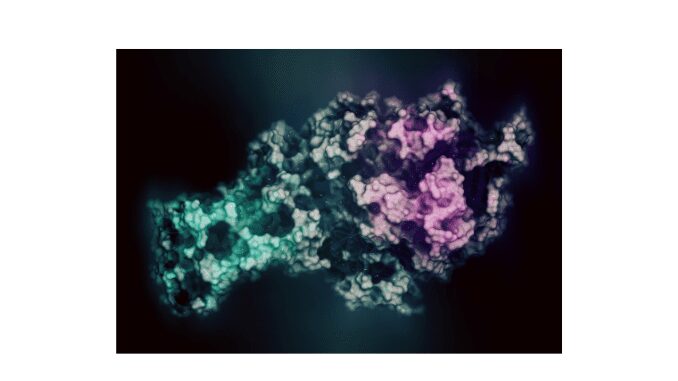
Flavoproteins
Flavoproteins are made of a polypeptide bound tightly to one of two related prosthetic groups either flavin mononucleotide called FMN or flavin adenine dinucleotide called FAD.
- The FMN and FAD are two coenzymes forms of riboflavin.
- Coenzymes are the non-protein part or compound which is necessary for the normal functioning of enzymes.
- FMN and FAD serve as prosthetic groups (non-protein helper part of an enzyme) of oxidation-reduction enzymes. These enzymes are known as flavoproteins or flavoenzymes.
The prosthetic group of flavoproteins is derived from riboflavin (vitamin B2). All flavoproteins are capable of donating and accepting two protons associated with non-heme iron proteins (NHI) or iron-sulfur Proteins (FeS).
Examples of flavoproteins
1. NADH dehydrogenase
The enzyme NADH dehydrogenase (NADH-coenzyme Q reductase) is a flavoprotein with FMN as the prosthetic group. The coenzyme FMN accepts two electrons and a proton to form FMNH2, NADH dehydrogenase is a complex enzyme and has two electrons.
NADH + H+ + FMN → NAD + FMNH2
2. Succinate dehydrogenase
Succinate dehydrogenase (succinate-coenzyme Q reductase) is an enzyme found in the inner mitochondrial membrane. It is also a flavoprotein with FAD as the coenzyme. This can accept two hydrogen atoms (2H+ + 2e−) from succinate.
Succinate + FAD → Fumarate + FADH2
Metalloflavoproteins
Many flavoproteins contain one or more metals as additional cofactors these are known as Metallo flavoproteins.
In the catalytic cycle of flavoproteins, the flavin moiety of the flavin nucleotides undergoes reversible reduction of the isoalloxazine to yield the reduced nucleotides FMNH2 and FADH2.
Mitochondrial flavoprotein functions
The main flavoproteins of the mitochondria are NADH dehydrogenase of the electron transport chain and succinate dehydrogenase of the TCA cycle. Succinate dehydrogenase and D-amino acid oxidase contain tightly bound FAD as the prosthetic group L amino acid oxidase contains FMN as the prosthetic group.
The redox function of FMN and FAD is exerted by the tricyclic isoalloxazine ring. For full reduction, they take up two electrons and two protons (usually in the 1,5-positions) and keep up electro neutrality. Contrary to NAD(P)+ the flavin compounds can also take part in one-electron reactions by the formation of a semiquinone radical.
Thus they can act as ‘redox switches’ between one- and two-electron mechanisms. The redox potential is more positive than the potential of NAD(P)+ and is further modified by the protein binding of the coenzyme. This enables flavin coenzymes to perform other oxidation reactions than NAD(P)
Flavin mononucleotide (FMN) and flavin adenine dinucleotide (FAD) are the two coenzyme forms of riboflavin. The ribitol (5 carbon) is linked to phosphate in FMN. FAD is formed from FMN by the transfer of an AMP moiety from ATP.
Biochemical function
- The flavin coenzymes are involved in many redox reactions responsible for energy production.
- Isoalloxazine is the functional unit of both FMN and FAD coenzymes which work as an acceptor of two hydrogen atoms.
- FMN or FAD accepts two hydrogen atoms and forms FMNH2 or FADH2, these reactions are reversible reactions.
- Enzymes that use flavin coenzymes (FMN or FAD) are called flavoproteins. The coenzymes (prosthetic groups) often bind rather tightly, to the protein (the apoenzyme) either by non-covalent bonds or covalent bonds in the holoenzyme.
- Many flavoproteins contain metal atoms (iron, molybdenum, etc.) which are known as Metallo flavoproteins.
- The coenzymes, FAD and FMN are associated with certain enzymes involved in carbohydrate, lipid, protein, and purine metabolisms, besides the electron transport chain.
Written By: Richa Pachori
